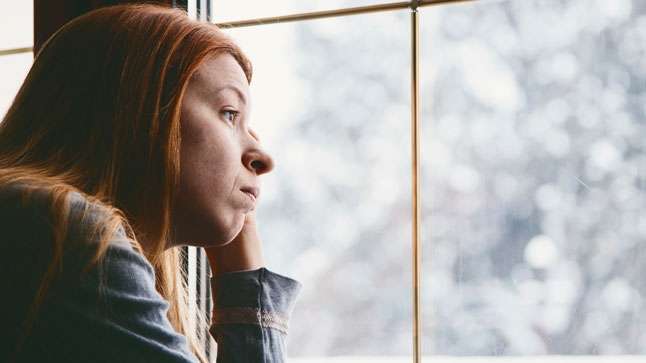Got the winter blues? All about seasonal affective disorder

If winter days get you down, you're not alone. You may have seasonal affective disorder, a type of depression triggered by the change of seasons. People with this disorder tend to feel depressed in the fall and winter, when there is less sunlight and the days are shorter.
Researchers believe that the lack of sunlight during these months causes changes in our body clock and internal rhythms, leading to depression. The difference between seasonal affective disorder and other types of depression is that symptoms generally lift in the longer, brighter days of spring and summer.
When your moods change with the seasons
As you might guess, this type of depression is more common for those living in northern states, since those regions have the least amount of sunlight during winter. While it is less prevalent in sunny Southern California, Kelly Kang, MD, a psychiatrist with UCLA Behavioral Health Associates, says that for the very reason that it is less common, Californians may be less likely to make the connection between their symptoms of depression and the changing seasons – and therefore may not seek help.
Symptoms of seasonal depression
The hallmarks of seasonal affective disorder are similar to other forms of depression:
- Feelings of sadness
- Loss of interest in activities you usually enjoy
- Difficulty sleeping or sleeping too much
- Difficulty concentrating
- Fatigue and lack of energy
It's important to keep in mind that seasonal affective disorder, like other types of depression, is treatable. If you have noticed a seasonal pattern to your depression, talk to your primary care physician about what you can do.
Let there be light
Medication and talk therapy are both excellent treatment options that can help relieve this and other types of depression.
One treatment specific to seasonal affective disorder is called light therapy. It uses a special box that emits light similar to the natural outdoor light our bodies crave. Light therapy can replace the missing sunlight that may be causing the depression. Your doctor will discuss treatment options with you to figure out the best solution for you. A combination of treatments may give you the best results.
You are my sunshine
In addition to treatments and therapies, there are changes you can make to help lift your depression, says Saralyn Masselink, LCSW, lead therapist for UCLA Behavioral Health Associates. These small steps can have a big impact on how you feel during the long winter months:
- Get outside: Take advantage of daylight hours and go for a walk in the sunlight.
- Open those blinds: Allow the natural light to enter your home or office.
- Enjoy the view: Simply placing your chair closer to a window can have a positive effect on your symptoms.
- Break a sweat: Regular exercise is helpful in combating symptoms of depression.


















